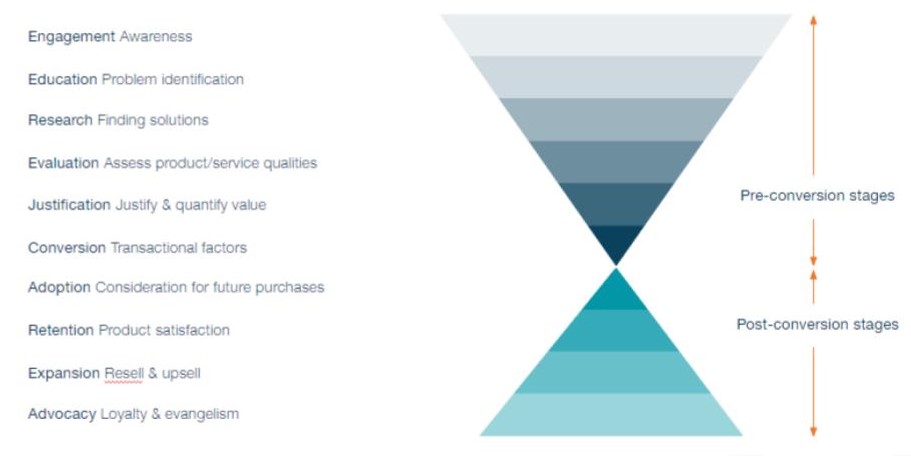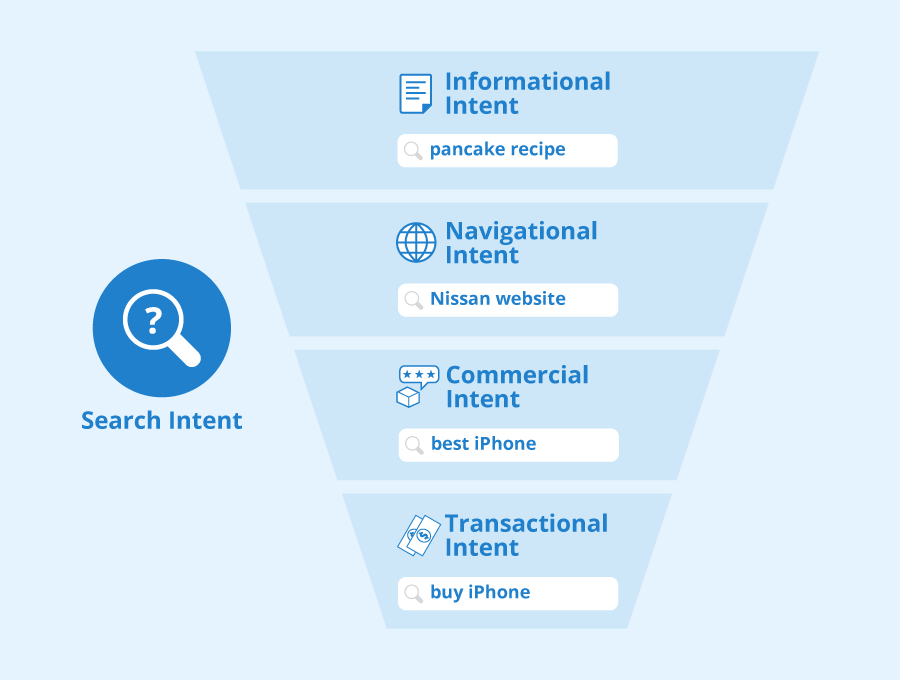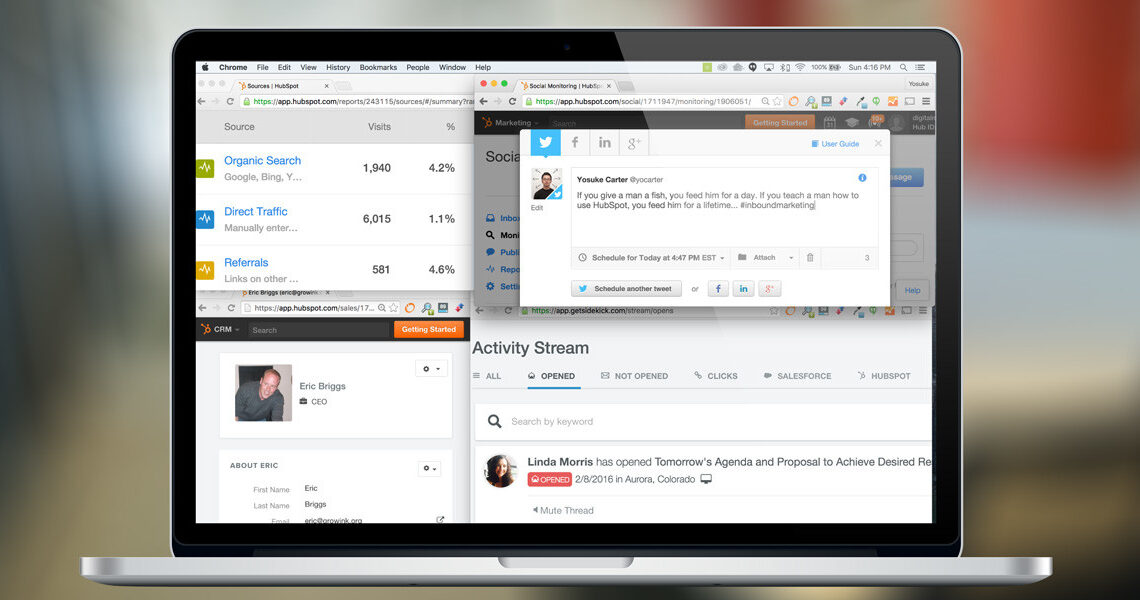What is inbound content marketing – a simple definition
Let’s start with the simple bit – breaking apart “inbound marketing” and “ content marketing” and then defining each one:
Inbound marketing = “Inbound marketing is a methodology to attract loyal customers to your business by aligning with your target audience’s needs. Creating tailored marketing experiences through valuable content is the core of an inbound marketing strategy that helps you drive customer engagement and growth.” (definition from HubSpot)
Content marketing = “Content marketing is a strategic marketing approach focused on creating and distributing valuable, relevant, and consistent content to attract and retain a clearly defined audience — and, ultimately, to drive profitable customer action.” (definition from Content Marketing Institute)
So, if we put the two together, we get a comprehensive strategy that combines the principles of inbound marketing and content marketing. We can say that “inbound content marketing” involves creating valuable, relevant, tailored content to address your audience’s needs. This will not help both attract and retain them, turning them into loyal customers and driving strong commercial results for your business.
This ecosystem of content helps foster positive, engaging experiences by not only meeting the audience’s expectations with valuable content, but surprising and delighting them. So how do you build one?
A completely made-up example of how this might work…

Forget all those dry lists about “the core principles of inbound content marketing” – let’s have fun with it instead…
Let’s say you’re running a remote watch repair company that operates nationally. And let’s say there’s a reasonably-sized but under-served audience who keep looking for useful advice on their Baum & Mercier Swiss watches.
For whatever reason, your competitors just aren’t interested in serving the audience with this information. Maybe they’re not very good at thinking strategically. Maybe they’re over-reliant on reaching this audience through outbound channels – like ads or email marketing. And it’s left a hole. No matter how hard this audience searches for terms like “caring for Baum & Mercier Swiss watches” or “how do I repair my Baum & Mercier Swiss watch?”, they just can’t seem to find any useful advice.
There’s some from overseas that’s not relevant. There’s loads of content from people trying to sell them a fancy new watch (comparison sites and the like). But this valuable audience, who are just looking for a bit of help, are forced to trawl the horrors of Reddit and other forums that are chock full of bad advice.
That’s where your genius inbound content marketing strategy comes in.
This type of audience is inbound by nature, because they are already looking for helpful content. So that’s what should be right at the top of your inbound content marketing funnel (below) – content that answers their questions in a helpful way, that doesn’t try and ram any commercial message down their neck.

Let’s take that example of a search term like “caring for Baum & Mercier Swiss watches” – right at the top of that funnel where people are just looking to educate themselves.
Here’s where you could provide comprehensive advice. A “one stop shop” for how to get the most out of their prized timepiece. Maybe a 5-minute embedded video? Maybe a downloadable guide? Maybe a content hub that has both, plus shorter pieces of written content that cover related specific terms like “how often should I wind my Baum & Mercier watch?” or even “how to fix crack in Baum & Mercier watch face.”
Notice how that last example is much closer to what your company does – i.e. watch repair – than the first? This is where you can start to weave in your more commercial messages – maybe you give five simple steps to repairing a crack in a Baum & Mercier watch with household items, but then end with a message about how important it is to get the job right, and that your company has experienced professionals who can get it looking like brand new. You might include a solid call to action with a contact form, for example. However…
The secret is to offer value first.
Give the audience what they came looking for first. Answer the questions your competitors can’t or won’t. Provide those answers in engaging formats, like video. Always lead that content somewhere else relevant – maybe each content piece links to your comprehensive downloadable guide. And maybe that guide, in turn, links to somewhere they can engage your expert services if their watch does break one day. Speaking of which…
Turning casual browsers into leads with inbound content marketing
Study after study shows that brands who offer their audience valuable content that matches their needs generate more revenue, and retain their customers for longer than those who don’t. Many big brands and small businesses alike latched onto this idea years ago, and while some did a great job, many didn’t. Huge gaps remain. Whole audiences and demographics remain underserved. More still are offered nothing but garbled nonsense, churned out by content mills, Odesk-ers, article spinners, and dodgy offshore SEO agencies looking to gain rankings and traffic.
But that’s your opportunity. Know where to look, and there’s a veritable bounty of unserved and underserved search terms from people just looking for helpful content. And there’s as big an opportunity stemming from those brands and businesses who got things horribly wrong by expecting a series of poor blog posts targeting informational searches to somehow drive conversions. So here’s where to start identifying and taking advantage of those opportunities…
Knowing your audience is key.
What are they looking for? What kind of formats should the answers be in (articles, video etc) to make it most useful for them? These are the key factors that will tell you where your audience is looking, how to engage them, how to retain their interest, and other essential questions. Using our Swiss watch example – are they likely to be looking for the answers to those care-related questions on, say TikTok? Is that really where your luxury watch audience is? And would an 8-second video be of much help to them? Probably not. Then again, it could be a gap nobody has identified yet! We’ll look at the types of tools you can use to find those gaps a little later on.
Understanding the intent behind what they’re searching for is also extremely important.
People searching Google with questions like “how do I?” and “what do I do if” are not looking to be sold something at this stage. They are at the start of their problem-solving journey – so help them with friendly advice, and link that to more friendly advice.
Other searches do have high commercial intent – like “Swiss watch repair near me.” You, of course, should also be looking to create valuable content at this lower level of the funnel. Give them all the information they need to know – your location with a Google Map, your opening hours, what services you offer on site, whether they need an appointment, what they can expect when they get there, parking information, public transport information, information on your prices etc. However, bear in mind there is unlikely to be massive gaping content gaps at this level of the funnel. This is where your competitors have probably put their focus, and may also be running outbound activity (e.g. ads) to intercept people before they even reach the organic search results.
Some searches are in the middle of the two – like “how do I fix my watch?” They’re probably not ready to fork out stacks of cash just yet if their search uses these types of words. They’re probably hoping there is a simple fix first. Some gentle persuasion can sometimes be effective here, but make sure you answer their question first, and do it in a way that doesn’t make it seem like you’re really only interested in taking their money.
Be patient
There is a delicate skill in knowing how quickly to move the audience “down a level” on the content funnel. From casual browser to mild commercial interest. Then down again to “ready to buy.” As a general rule, it’s best to move people “down” one level at a time. Somebody who’s landed on your site with a general question about watch care is not going to sign up for your lifetime watch insurance on their first visit – no matter how convincingly you think you can write.
So gently guide people to the next piece of relevant content. Ask yourself “what would this person want next?” and not “what do I want from this person?” (because that’s probably money!).
Nurture the relationship
If you’ve done the hard work to reel your audience in with helpful content, the last thing you want is for them to move on with their lives and forget all about you! So find ways to re-engage them. They may not be ready to buy from you on first interaction, but maybe they will follow you on social media? Bookmark your site? Maybe they’re even interested in signing up for tailored advice for their exact watch model over email? Remember, this isn’t outbound marketing – they found you first. You’re just reminding them you’re there, offering more valuable content if and when they want it.
The idea is to make your watch repair brand the first one that leaps to their mind whenever they have a question, a thought, or a passing curiosity about anything related to Baum & Mercier watches. When theirs inevitably does break, you’ll have proven your valuable expertise to them so many times that choosing you for repair will be a no-brainer.
Optimising for search: how inbound content marketing boosts SEO

In terms of creating helpful content for your audience and getting it to rank on Google, it’s a win-win-win situation. Your audience wants answers. Google wants to give them the best ones. So do you!
So this is by no means a comprehensive list, but there are some basic rules to follow when creating helpful content that will help with favourable rankings in Google:
Focus on quality over quantity. Remember, the internet is full of garbled content produced by people trying to cut corners or game the system. We’re not trying to add to that mess. And we’re certainly not going to create reams and reams of to hit arbitrary word counts or because some “digital guru” said you should be producing 9,000 articles a year (or whatever).
Get inside the audience’s head, create something that gives them as much value as is reasonably possible, and move on to the next piece.
Make sure the keyword(s) you’re targeting are in the right places. Meta tags, the page URL, header tags, and prominent places within the content. Remember though, you’re writing for people, not for search bots. Google wants its user base to see relevant, useful content, not keyword-stuffed garbage. Make sure you use the optimal number of characters for each tag.
Make sure your content is readable by search engines – they may not be able to “see” text in a pdf that’s behind a login screen, and Google won’t know what your video is about unless you tell it (including a transcription or adding captions helps).
Answer the question, succinctly, in the first 500 words. Then elaborate. If it takes people five minutes to get a simple answer to whether their cracked watch face is fixable, they will leave and go somewhere else. Google wants people to land on valuable content that matches their query and gives them a clear enough answer that they don’t need to look elsewhere. Those are the pages their algorithm rewards with strong rankings.
Include rich media. Images, embedded video, even gifs – anything you can use that’s not simply a wall of text. Engaging formats that can help you tell the story in a visual way are usually key here.
This is, of course, ignoring off-page signals (like the quality of your site’s backlink profile) and technical elements (like page load speed) which are also key. But that’s straying a little far from the subject – there’s a wealth of that type of advice on sites like AHRefs.
So how do you find the gaps like the (completely made-up) Baum & Mercier example above?
Tools you can use to find inbound content gaps:
Google Keyword Planner
Keyword Planner? In 2024? Really?! I hear you all cry. Yes. Why? While primarily designed for advertisers, Google Keyword Planner can still provide valuable insights into search volume, competition, and bid estimates for keywords related to your content. Who else is going to have more accurate and up-to-date data on Google searches than…Google?
Simply set up a GoogleAd account (free) and use Keyword Planner to identify relevant keywords and understand their popularity, which can aid in content planning and gap analysis.
SEMrush
Use SEMrush to identify keywords your competitors are ranking for but you are not. Analyse the content gap to discover topics that your competitors have covered but you haven’t.
Ahrefs
Ahrefs provides a Content Gap tool that allows you to compare your content against competitors. Identify keywords and topics where your competitors are ranking, and you are not.
BuzzSumo
BuzzSumo can help you find the most shared content on social media for specific topics. Discover what content is performing well in your industry, revealing potential gaps in your own strategy. This is great if platforms like Instagram or Twitter are the natural environs of your target audience.
Google Search Console
Analyse the Search Analytics report to see the queries that users are entering to find your site. Identify keywords for which you’re ranking on the second page and could improve to rank higher.
Google Trends
Use Google Trends to understand the popularity of search terms over time. Identify emerging topics or seasonal trends that you might be missing in your content.
ContentCal
ContentCal is a content planning tool that helps you visualise your content schedule. Identify gaps in your publishing schedule and ensure consistent coverage of relevant topics.
MarketMuse
MarketMuse uses AI to analyse your existing content and suggest topics to cover to improve your content’s relevance and authority.
Ubersuggest
Ubersuggest provides insights into keyword gaps, helping you find keywords that your competitors are ranking for that you might be missing.
How do you measure inbound content marketing success?
Ok, so you have your inbound content strategy at the ready. You know your audience’s needs and are ready to put them first. You have the tools at the ready to find those important content gaps. Now you need to set yourself up for success – by getting the right metrics lined up to track your progress.
It really is important to track everything, benchmark it, and be prepared to pivot your strategy accordingly. Also, it’s important to keep the whole picture in mind. Maybe one key metric is moving but others aren’t – it could be a sign your strategy needs tweaking, or could just be early days. That said, here are some of the core metrics you’ll want to measure so you can start moving them in the right direction…
Key metrics and analytics for inbound content marketing:
- Website traffic
- Metric: Total visits, new vs returning visitors
- Why it matters: Indicates the overall reach and popularity of your content.
- Lead generation
- Metric: Conversion rate, number of leads
- Why it matters: Measures the effectiveness of your content in capturing and converting leads.
- Conversion rate
- Metric: Percentage of visitors who take a desired action (e.g., sign up, download).
- Why it matters: Reflects how well your content motivates users to complete the intended goals.
- Content engagement
- Metric: Time on page, page views, bounce rate
- Why it matters: Indicates how engaged visitors are with your content. Longer time on page and more page views often signify high-quality content.
- Social media metrics
- Metric: Likes, shares, comments, click-through Rate (CTR)
- Why it matters: Measures the impact and virality of your content on social platforms.
- SEO performance
- Metric: Keyword rankings, organic traffic
- Why it matters: Reflects how well your content is performing in search engine results, driving organic traffic.
- Email marketing metrics
- Metric: Open rate, click-through rate, conversion rate
- Why it matters: Assesses the effectiveness of email campaigns in driving engagement and conversions.
- Customer retention
- Metric: Churn rate, repeat customer rate
- Why it matters: Indicates how well your content contributes to retaining and nurturing existing customers.
- Sales metrics
- Metric: Sales conversion rate, revenue per customer
- Why it matters: Links content efforts to actual sales outcomes and revenue generation.
- Brand awareness
- Metric: Brand mentions, brand searches
- Why it matters: Measures the impact of your content in increasing brand visibility and recognition.
- Customer feedback
- Metric: Customer reviews, surveys, net promoter score (NPS)
- Why it matters: Gauges customer satisfaction and provides insights into areas for improvement.
- Cost per acquisition (CPA)
- Metric: Cost per lead, Cost per conversion
- Why it matters: Evaluates the efficiency of your content marketing efforts in acquiring customers.
Regularly monitoring these metrics and analytics will help you assess the performance of your inbound content marketing strategy, make data-driven decisions, and optimise your approach for better results.
Inbound content marketing success stories

Ok, let’s retire our made-up Swiss watch example. It’s time (sorry) to look at some real life examples of brands who have brilliantly matched what their audience wants with a valuable content ecosystem that creates positive experiences for their target audience:
Buffer
Buffer, a social media management platform, practises transparent content marketing by sharing details about their company culture, finances, and decision-making processes. Their blog serves as a hub for valuable insights, data-driven content, and behind-the-scenes glimpses. This transparency builds trust with their audience and fosters a sense of community.
Moz’s Whiteboard Friday
Moz, a company specialising in SEO and digital marketing, hosts a weekly video series called “Whiteboard Friday.” In these videos, industry experts share insights, tips, and strategies related to SEO and online marketing. This consistent and valuable content not only educates their audience but also establishes Moz as a go-to resource in the field.
Home Depot’s DIY project ideas
Home Depot offers a wealth of content catering to homeowners and DIY enthusiasts. Their website features how-to guides, step-by-step tutorials, and video demonstrations for various home improvement projects. By providing valuable guidance and inspiration, Home Depot not only engages consumers but also positions itself as a trusted resource for anyone looking to enhance their living space.
Cooking Light’s healthy recipes and tips
Cooking Light, a brand focused on healthy eating, provides a plethora of content centred around nutritious recipes, cooking tips, and meal planning advice. Their website and social media channels offer valuable resources for consumers seeking to adopt a healthier lifestyle. This approach not only attracts an audience interested in health and wellness but also reinforces Cooking Light as an authority in the space.
Nike Training Club workout plans
Nike Training Club (NTC) offers a variety of workout plans, exercise demonstrations, and fitness tips through its app and website. By providing consumers with free and accessible content related to fitness and training, Nike not only promotes its products but also builds a community around a shared interest in an active lifestyle. This strategy enhances brand loyalty and engagement.
Future trends: what’s evolving in inbound content marketing?
Nobody can see the future. But there are a few emerging trends (as of 2024) that point to a further proliferation of formats, platforms, and audience needs that could drive new opportunities (and challenges) when developing effective inbound content marketing plans…
Interactive content
Anticipate a surge in interactive content such as quizzes, polls, and immersive experiences to enhance engagement.
Further video dominance
Video content will persist in its dominance, with a shift towards short-form videos for quick consumption on platforms like TikTok and Instagram Reels, or LinkedIn for B2B brands.
Personalisation and AI
Advanced personalisation using AI technologies to deliver tailored content experiences based on user behaviour and preferences.
Voice search optimisation
Optimising content for voice search as smart speakers and voice-activated devices become more prevalent.
Ephemeral content
The popularity of ephemeral content, like disappearing stories on platforms such as Snapchat and Instagram, will continue to grow.
Inclusive and diverse content
A focus on creating content that is more inclusive, diverse, and representative of different cultures and perspectives – many, many audiences remain woefully underserved when it comes to valuable content (e.g. dedicated make-up tutorials for a full range of complexions, skin conditions, and all of the possible combinations).
SERP features optimisation
Increased emphasis on optimising content for featured snippets, rich snippets, and other SERP features to enhance visibility in search results.
Augmented Reality (AR) integration
Exploring opportunities for integrating augmented reality into content marketing strategies for a more immersive user experience.
These trends reflect the evolving landscape of inbound content marketing as technology, consumer behaviour, and industry dynamics continue to shape the way brands connect with their audiences.



 10 amazing content marketing examples
10 amazing content marketing examples  The problem with defining “content strategy”
The problem with defining “content strategy”  How effective is content marketing?
How effective is content marketing?  Is AI a content marketer’s friend or foe?
Is AI a content marketer’s friend or foe?  What is attraction content marketing?
What is attraction content marketing?  What is “omni channel” content marketing?
What is “omni channel” content marketing?